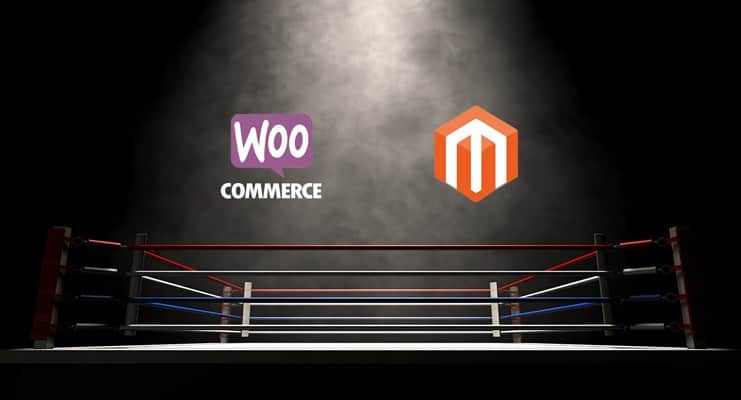WooCommerce vs. Magento – Your Guide to Ecommerce Websites
Having built many ecommerce websites over the years, we are big fan of both WooCommerce and Magento. But what puts them top of the list for us?
We’ll review them both in this blog.
If you already have a WordPress website that you’d like to adapt for ecommerce, then go with WooCommerce. It is an ecommerce toolkit made specifically for WordPress so is the logical choice.
If you are starting from scratch with a brand new website, then you could go with either.
How are they similar?
Open source
Both are open-source platforms, which means that anyone is free to download, use and develop however they like. Once we’ve built the website for you, it’s yours to keep.
There are no subscriptions or annual fees to use the platform, but you might have to pay for some extra functionality.
As they are both so widely used, they are being constantly improved on and updated. You wouldn’t have to worry about either platform going stagnant or lacking support.
Search Engine Optimisation
Both systems offer very good SEO options in terms of setting up page titles and descriptions. All other optimisations are down to your text copy and your developers knowledge.
The End User
Your customers will be hard pushed to see the difference between a WooCommerce and a Magento powered website. Both can be customised with themes and then made to look exactly as you imagine.
They both offer products, split into categories and can be searched and filtered. Both offer an unlimited array of payment gateways (PayPal, WorldPay, SagePay etc).
How do they differ?
Adding your own content
If you want to be able to add new pages and content such as blogs and news yourself, then this is easier with WooCommerce, especially for a beginner.
If you want a blog, Magento needs an extra plugin that is sometime tricky to implement, whereas WooCommerce has this built in and does it very well.
Functionality
Both systems use plugins to extend functionality, which sometimes have a cost.
Installing plugins on WooCommerce is generally easy, and you could probably do it yourself. However, with Magento you are likely to need a dedicated developer to do this for you, as it can be a bit tricky when you run into any conflicts, where one plugin breaks another plugin.
The conflict issue hardly ever occurs in Woo-Commerce and when it does, they are generally easier to fix.
Coding and Customisation
Magento is based on the Zend framework, which makes use of cascading coding techniques and can take a little bit of getting used to. Novice coders might find themselves editing the wrong ‘level’ of code and scratching their head for a while.
Behind the scenes, Magento code is located in a logical fashion, but also means it is spread out all over the place! WooCommerce core files are nicely packaged together in one or two folders (Three folders if you make use of child themes).
Your developer needs a much higher understanding of PHP to customise Magento than WooCommerce. Generally speaking, Magento developers often demand a higher price tag due to the knowledge required to be a true Magento developer.
Server Load
One thing to be aware of with Magento is server load, possibly due to how the Zend framework operates. Magento uses lots more memory and server resources than WooCommerce, so as your store grows, you will quickly need your web server to keep up with it. Often a dedicated server is required for high-end websites.
Adding WooCommerce to an existing WordPress appears to have little or no effect on server load.
Decisions, decisions
From a developer’s perspective, WooCommerce is much easier and faster to implement – therefore is less expensive to develop.
However, Magento seems to have been well adopted by the larger retailers. Over the last few years we have tried to find out why this is the case, when it is apparent that WooCommerce wins in nearly every category. We believe this is because Magento was out there in the early days when WordPress was just a blogging tool; therefore Magento has a strong user base. Why move?
If you like the feel good factor that you are using Magento as ‘That is what the big boys use’ – then great, choose Magento.
If you are happier to achieve the same result, but save a few pennies on development time, then perhaps give WooCommerce a try.






